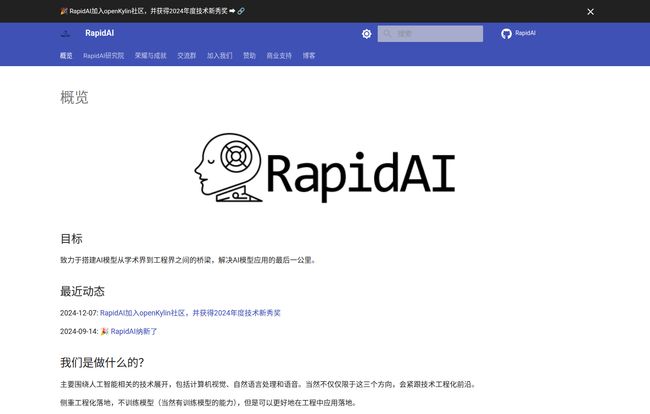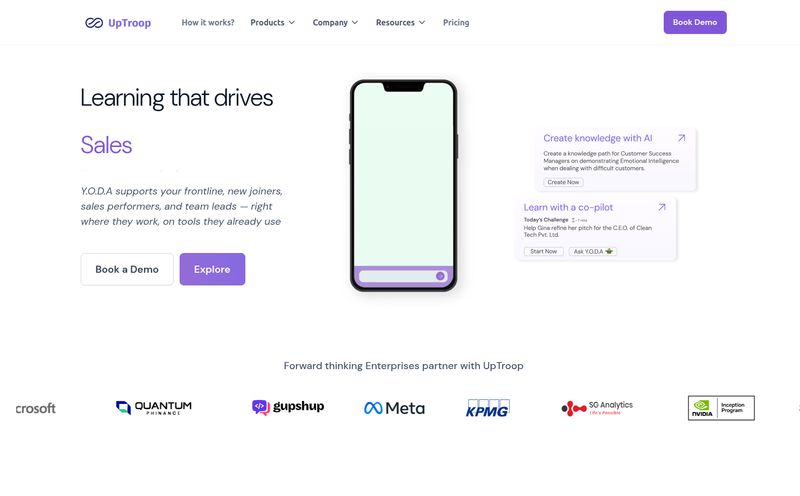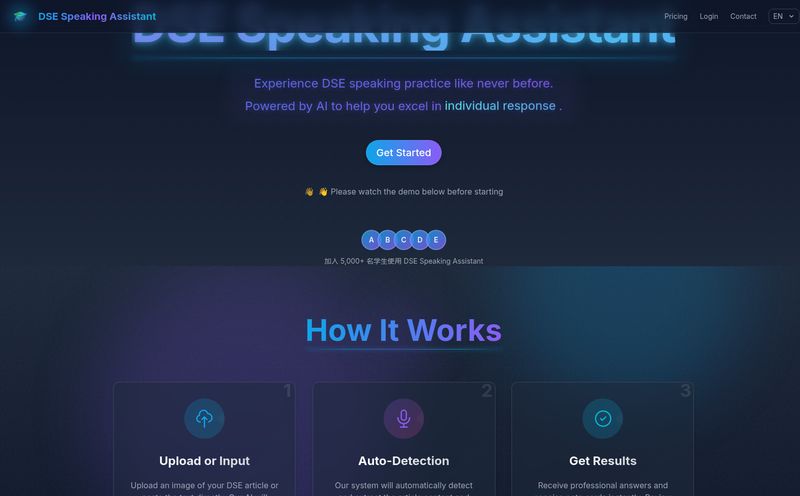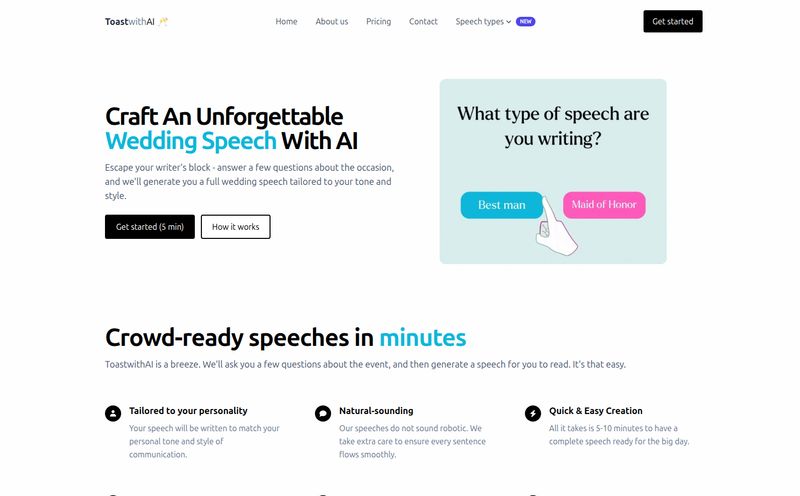If you go looking for "RapidAI," you might find yourself on a GitHub page, staring at a bunch of open-source LLM and OCR projects in Chinese. That’s cool, but that's not the RapidAI we're talking about today. The RapidAI that's been making waves in my world—the one that sits at the intersection of tech, traffic (of the patient variety), and trends—is a whole different beast. It's a clinical AI platform, and frankly, it’s one of the most interesting applications of AI I've seen in a long time.
As an SEO guy, I spend my days obsessing over efficiency. Shaving seconds off page load time, finding the quickest path to conversion... it's all about speed. But then you look at a field like healthcare, specifically stroke care, and the concept of speed takes on a whole new meaning. They have a saying: time is brain. Every minute a stroke goes untreated, millions of brain cells die. So when a platform claims it can speed up that entire process, my ears perk up. Not just as a tech nerd, but as a human being.
So, What Exactly is This RapidAI Platform?
In the simplest terms, RapidAI is a sophisticated decision-support tool for medical teams. Think of it less as a robot doctor and more as a super-powered co-pilot or an air traffic controller for critical patient information. It uses artificial intelligence to analyze medical images (like CT scans) in real-time, pulling out critical information that helps doctors make faster, more informed decisions. It’s not just about one-off scans, either. It’s an enterprise-wide platform that aims to connect different departments—from neurovascular and cardiac to radiology—into a single, streamlined workflow.
You’ve got a patient in the ER with stroke symptoms. The clock is ticking. Loudly. Traditionally, the process can be clunky. Get the scan, wait for a radiologist to read it, get the report to the stroke team, decide on a course of action... It all takes precious time. RapidAI short-circuits that process by analyzing the images simultaneously and pushing alerts and key insights directly to the entire care team’s mobile devices. The neurologist can see the AI's analysis of a potential brain bleed before the patient is even off the scanner table. That’s a game-changer.

Visit RapidAI
The Core Features That Make a Difference
This isn't just a fancy image viewer. The platform is built on a suite of tools designed for specific, high-stakes situations.
The platform’s real power comes from its specialized modules. For instance, its stroke triage support and AI-driven bleed assessment are its bread and butter. They automatically identify suspected large vessel occlusions (a major type of stroke) or intracranial hemorrhages from non-contrast CT scans, something that can be subtle and easy to miss under pressure. Then there's aneurysm tracking, which helps manage one of the scariest ticking clocks in medicine. It’s not just about spotting the problem once; it's about providing ongoing surveillance and analytics to manage patient care over the long term.
But the feature that really gets me is the real-time collaboration and alerts. It creates a unified, virtual command center. A specialist across the state can consult on a scan as easily as the doctor standing by the bedside. This breaks down the physical walls of a hospital, which can be the difference between life, death, and long-term disability for a patient in a rural hospital without a resident neurologist. That's not just operational efficiency; it's democratizing access to expert care.
The Good, The Bad, and The AI-Powered Reality
No tool is perfect, no matter how shiny the AI is. In my experience, even the most promising tech has practical hurdles. So let’s get into the real-world pros and cons.
The Upside: Why Hospitals are Taking Notice
The biggest win here is speed, which translates directly to improved patient outcomes. There's a mountain of clinical data and publications backing RapidAI (they’re not shy about listing them on their site), suggesting this isn’t just theoretical. Faster decisions mean faster treatment, which in the case of stroke and cardiac events, is everything. This, in turn, leads to streamlined workflows. Less waiting around, more decisive action. For a hospital administrator, this is music to their ears. It means better resource allocation, reduced patient stays, and ultimately, a stronger financial bottom line. It’s one of those rare instances where what’s best for the patient is also what’s best for the business side of the hospital.
The Practical Hurdles to Consider
Okay, let's ground ourselves. First, this isn't a plug-and-play USB stick. RapidAI requires deep integration with a hospital's existing systems—the PACS (Picture Archiving and Communication System) and EMR (Electronic Medical Record). Anyone who's worked in IT knows that integration projects can be... well, they can be a headache. It takes time, resources and cooperation. Secondly, you can't just hand this to a team and expect miracles. There's a learning curve. Staff need to be trained not just on how to use the software, but how to trust and incorporate AI insights into their established clinical judgment. It's a shift in mindset as much as a shift in technology.
Who is RapidAI Really For?
This is definitely a specialized tool. It’s not for your local GP's office. The primary users are hospital-based teams in high-acuity service lines. We're talking:
- Neuro-interventionalists and Stroke Neurologists: This is their command center for making life-or-death decisions about thrombectomies.
- Cardiologists and Vascular Surgeons: With modules for things like pulmonary embolism, they are a key audience.
- Radiologists: It acts as a second set of eyes, helping them prioritize critical cases in a massive queue of images.
- Hospital Administrators: They're the ones looking at the big picture—patient throughput, cost of care, and competitive standing. A platform that can demonstrably improve all three is a huge deal.
Let's Talk Money: The RapidAI Pricing Question
Ah, the part of the review everyone scrolls down to. So how much does it cost? The short answer is: it depends. RapidAI uses an enterprise sales model, which means there's no public pricing page. You have to contact them for a quote.
I've always found this a bit frustrating as a buyer, but in the B2B world for software this specialized, it makes a certain kind of sense. The cost will depend on the size of the hospital, the specific modules they need, and the level of integration required. It’s not a one-size-fits-all product. While I can't give you a number, I can tell you to frame it as an investment. The business case will hinge on calculating the ROI from reduced length-of-stays, improved patient outcomes (which affects reimbursement), and operational efficiency gains.
Frequently Asked Questions about RapidAI
I get a lot of questions about platforms like this, so here are a few quick answers.
Is RapidAI FDA-cleared?
Yes. This is a big one. RapidAI has received numerous FDA clearances for its various algorithms and products. This is a critical requirement for any medical device or software used for clinical decision-making in the United States.
How does RapidAI integrate with our hospital's existing systems?
It’s designed to integrate with standard hospital IT infrastructure, including the EMR (like Epic or Cerner) and PACS. However, this is a technical process that will require work from both the hospital's IT department and the RapidAI implementation team.
What kind of training is required for our staff?
RapidAI provides training and onboarding for clinical staff. The goal is to make the platform intuitive, but as with any new clinical tool, proper training is essential to ensure it's used effectively and safely. It's not just button-pushing; it's about interpreting the data correctly.
Is RapidAI just for stroke care?
While it started with a strong focus on neurovascular conditions like stroke, it has expanded significantly. The platform now has solutions for cardiac conditions (like pulmonary embolism) and other vascular issues, positioning itself as a broader care coordination platform.
How does it actually improve a hospital's finances?
It's a chain reaction. Faster diagnosis and treatment can lead to better patient outcomes. Better outcomes can mean shorter hospital stays and fewer long-term complications. This reduces the overall cost of care per patient and can improve a hospital's quality metrics, which often impacts insurance reimbursements.
Is this the same as the RapidAI on GitHub?
Nope! A common point of confusion. The RapidAI discussed here is a commercial, clinical platform for hospitals. The other is an open-source AI framework project. Same name, completely different worlds.
My Final Thoughts on the RapidAI Platform
Look, the hype around AI can be exhausting. But every now and then, you see an application that just clicks. RapidAI feels like one of those. It’s not trying to replace doctors. It’s trying to give them superpowers. It’s focused on a clear, high-stakes problem and provides a tangible solution that addresses the needs of patients, clinicians, and administrators all at once.
Of course, the proof is in the pudding. The integration and training are real hurdles. But the potential to standardize and accelerate care for some of the most time-sensitive conditions we face is immense. It's a powerful glimpse into a future where technology doesn't just make our lives more convenient, but actively helps to save them.
Reference and Sources
- Official Website: RapidAI.com
- Example of FDA Clearance News: RapidAI Receives FDA Clearance for Generative AI Solution
- The Other RapidAI (Open-Source Project): RapidAI on GitHub Pages



